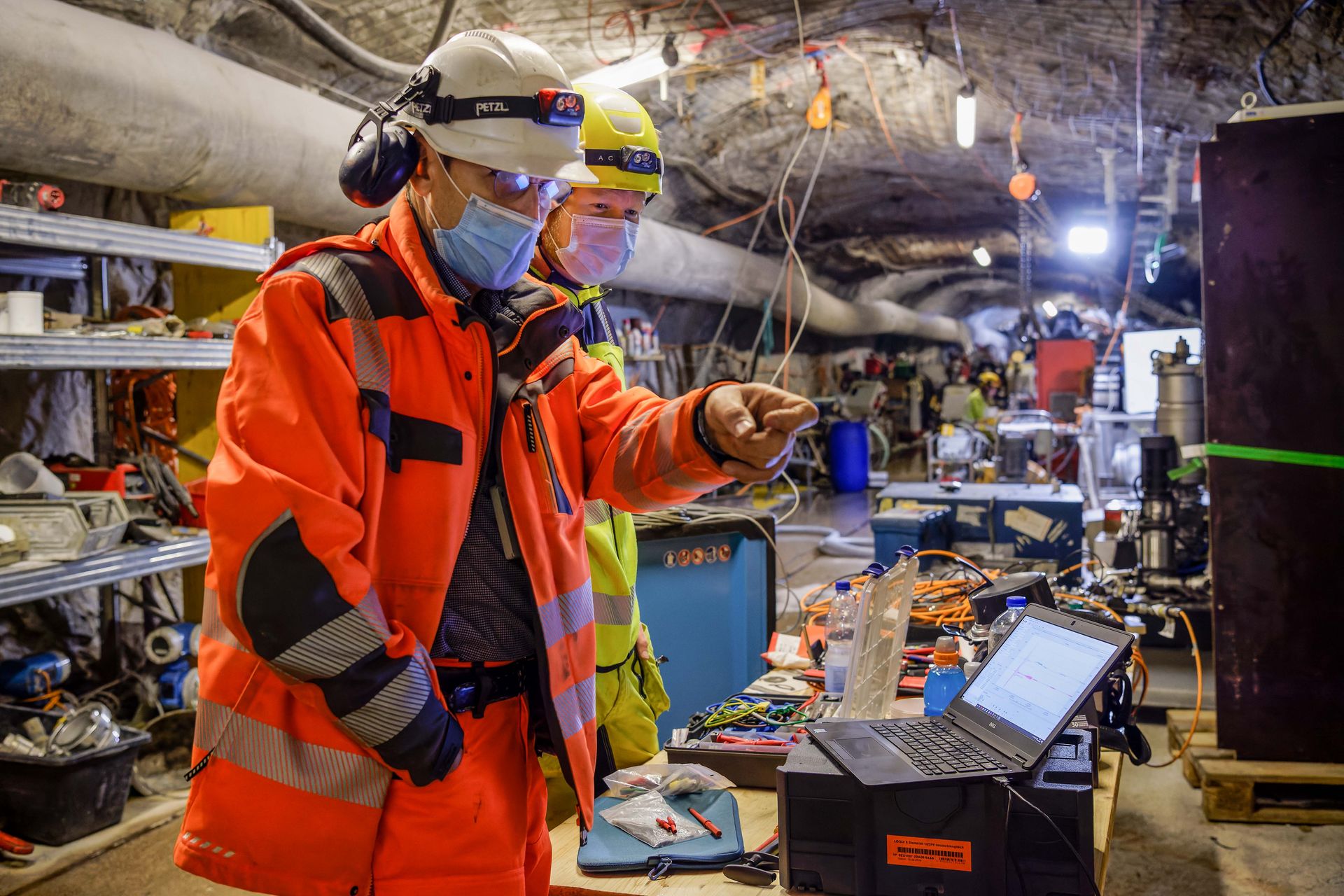
Breakthrough for deep geothermal energy
The Swiss centre of excellence Geo-Energie Suisse (GES) tested its novel stimulation model in the Bedretto Underground Lab, which was completed in 2020 with funding from the Werner Siemens Foundation. At various intervals and depths, the researchers pressed precisely measured amounts of water into the boreholes. The water caused (“stimulated” in technical language) systems of fine fissures to form in the granite, leading to the creation of ten small heat reservoirs that are linked together and that function as a single, larger reservoir. Safely creating these underground reservoirs is the most difficult aspect of deep geothermal energy—and an essential part of generating electricity with the technology. To create electricity using the earth's heat, water is conducted down to the reservoirs, where it is heated and then pumped back to the surface. A power plant can efficiently use the hot water (150 degrees Celsius) to generate power.
A seismic green light
The new GES system was patented for Switzerland in 2012. But what does it do differently in comparison to the 2006 drilling experiments in Basel that caused an earthquake with a magnitude of 3.4 on the Richter scale? The answer: instead of one single heat reservoir, many smaller reservoirs are created at a depth of four to five kilometres. This significantly reduces the risk for perceptible earth tremors—in comparison to Basel, by a factor of one million.
In a Tages-Anzeiger article dated 21 January 2021, Stefan Wiemer from the Swiss Seismological Service confirmed that, “seismically speaking, everything was in the safe zone”. To ensure safety, the Swiss Seismological Service closely monitors all experiments in the subterranean lab. Also contributing to safety are the seismic sensors tested for the first time in the Bedretto Underground Lab as well as the measurement and monitoring procedures for observing and controlling rock stimulation and analysing seismic data in real time. Thanks to this new monitoring method, the team at ETH Zurich can make highly accurate predictions of how the granite will react after stimulation.
Cultivating trust in deep geothermal energy
The next step is for ETH Zurich, EPFL and the University of Neuchâtel to evaluate the data from the Bedretto Underground Lab. The results will form the basis for the future, detailed stimulation programme of the GES pilot project in Haute-Sorne in the canton of Jura, as Geo-Energie Suisse announced in a news release dated 21 January 2021. “We hope that the breakthrough in the Bedretto Lab will strengthen the confidence the Jura government and its supervisory authorities have in Haute-Sorne’s safety concept and that we’ll be able to start preparations for the exploratory borehole before the end of 2021,” says Peter Meier, CEO of GES, in the news release.
Links
> Geo-Energie Suisse news release (in German and French), dated 21 January 2021
> Tages-Anzeiger article (in German), dated 21 January 2021